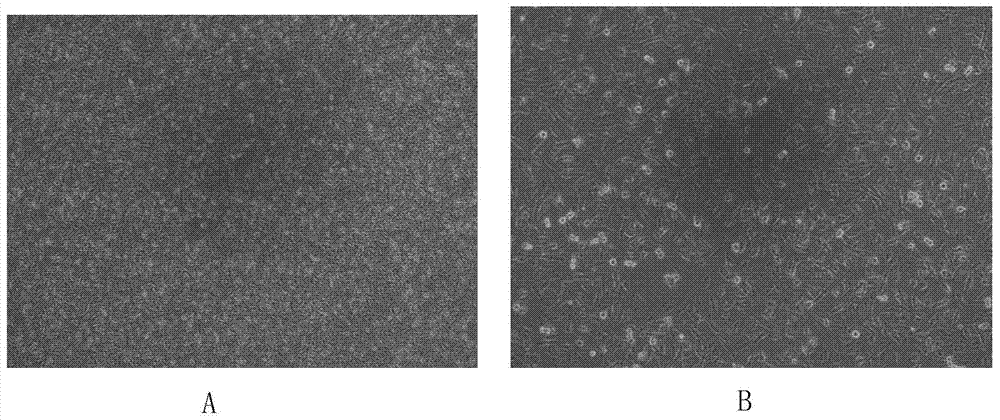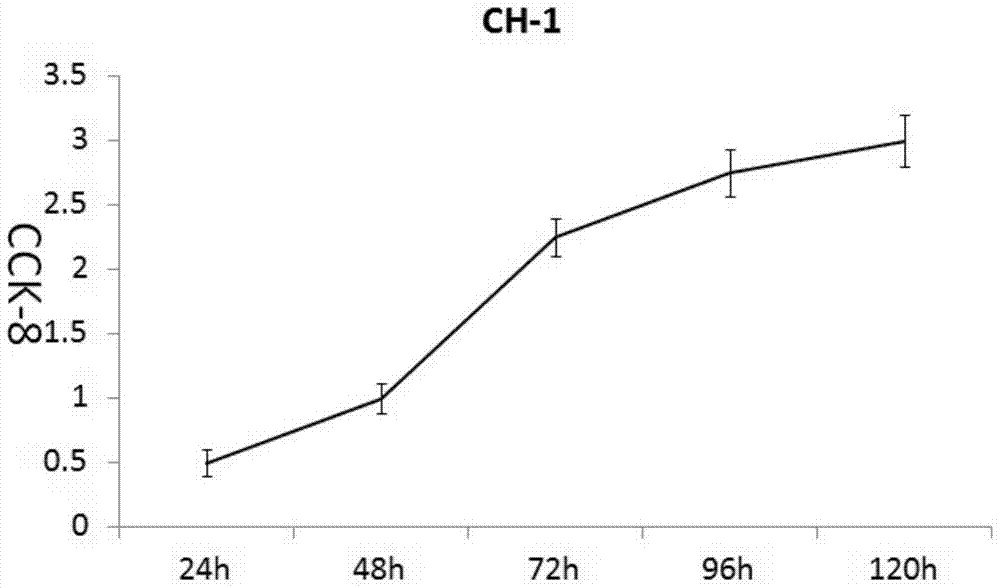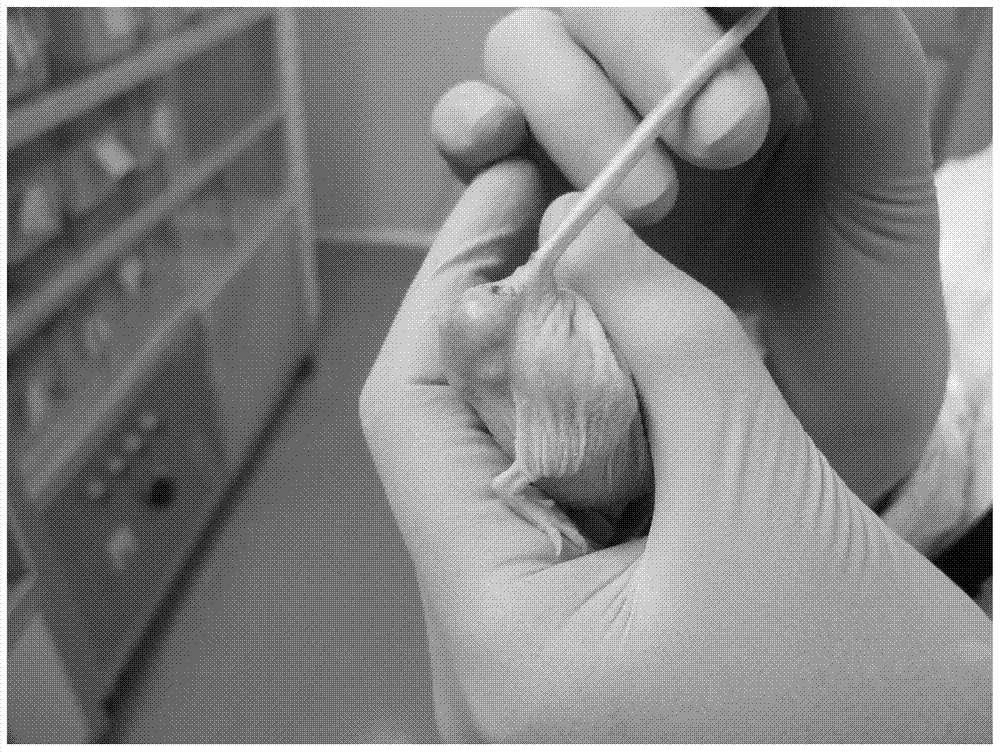A human low-invasive bladder cancer cell
A bladder cancer cell, invasive technology, applied in the fields of biology and oncology, can solve the problems of non-expression, inconsistent cell line characteristics and genetic background, poor tumorigenicity, etc.
- Summary
- Abstract
- Description
- Claims
- Application Information
AI Technical Summary
Problems solved by technology
Method used
Image
Examples
Embodiment 1
[0092] The establishment of embodiment 1CH-1 cell line
[0093] (a) Source:
[0094] Stage: T1
[0095] Chief complaint: hematuria
[0096] Cystoscopy: Bladder trigone 1×1cm space occupying
[0097] Pathology: high-grade urothelial carcinoma
[0098] Surgery: bladder cancer resection
[0099] (b) Primary cell culture:
[0100] Take 0.5 × 0.5 cm of cancer tissue for primary cell culture. For the method, please refer to the general method.
[0101] The fresh bladder cancer tissue digested with collagenase can grow adherently about 5 hours after centrifugation and plating. A large number of cell clones can appear in about 5 days, and mesenchymal cells and epithelial cells can be seen mixed growth at this time. The mesenchymal cells can be basically cleared after three passages by differential digestion.
[0102] (c) Animal model establishment:
[0103] The cells were taken and inoculated into immunodeficient mice. For the first time, CH-1 cell line was planted in 3 femal...
Embodiment 2
[0104] Example 2 Biological Characteristics of Low Invasive Bladder Cancer Cell Line CH-1
[0105] Morphological observation: the cell line is spindle-shaped or polygonal ( figure 1 ), the cell shape is stable.
[0106] Proliferation activity: CCK-8 reagent was used to detect the proliferation activity of CH-1 cell line, and it was found that its doubling interval was 48-72 hours ( figure 2 ).
[0107] Passage activity: The cell line has been passed to the 86th passage, the cell shape and growth rate remain unchanged, and the recovery is good after cryopreservation.
[0108] Related protein expression and marker expression of low-invasive bladder cancer:
[0109] a. Immunohistochemical method with mouse anti-human keratin antibody CK AE1 To detect the source and species of mouse tumor in situ. The results showed that patients with urothelial carcinoma of the urinary tract highly expressed CK AE1 protein, but no expression in interstitial tissue ( Figure 4 A). Orthoto...
Embodiment 3
[0111] Example 3 Study on the transfer rate and tumor formation rate of the low-invasive bladder cancer cell line CH-1
[0112] The cells were inoculated into immunodeficient mice. For the first time, the CH-1 cell line was planted in 40 female nude mice, and 35 nude mice were successfully tumor-bearing, and 19 of them had metastasis to lymph nodes or other organs. The above experiment was repeated three times, and the average tumor-bearing success rate and metastasis rate were taken. It was found that the tumor-bearing success rate of the modified cell line was about 75-80%, and the metastasis rate was lower than 60%.
PUM
 Login to View More
Login to View More Abstract
Description
Claims
Application Information
 Login to View More
Login to View More - Generate Ideas
- Intellectual Property
- Life Sciences
- Materials
- Tech Scout
- Unparalleled Data Quality
- Higher Quality Content
- 60% Fewer Hallucinations
Browse by: Latest US Patents, China's latest patents, Technical Efficacy Thesaurus, Application Domain, Technology Topic, Popular Technical Reports.
© 2025 PatSnap. All rights reserved.Legal|Privacy policy|Modern Slavery Act Transparency Statement|Sitemap|About US| Contact US: help@patsnap.com



